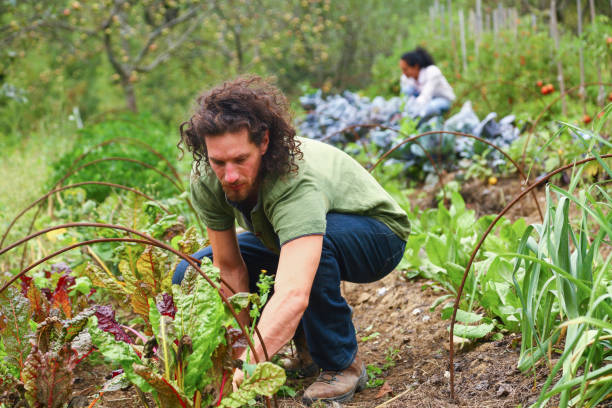Crafting Culinary Gardens: The Art of Edible Landscapes
In a world where sustainability meets style, a new trend is taking root in home gardens across the nation. Culinary gardens, also known as edible landscapes, are transforming ordinary yards into vibrant, productive spaces that tantalize both the eyes and the taste buds. This innovative approach to gardening blends ornamental design with practical food production, creating a feast for the senses right in your own backyard.

The Roots of Culinary Gardening
Culinary gardens are not a new concept, but rather a revival of ancient practices with a modern twist. Historically, kitchen gardens were common features in estates and monasteries, providing fresh produce for daily meals. The French potager, a decorative kitchen garden, and the Italian giardino segreto, or secret garden, are early examples of integrating edibles into ornamental spaces.
In recent years, there has been a resurgence of interest in edible landscaping, driven by concerns over food security, environmental sustainability, and a desire for fresher, healthier produce. This contemporary interpretation of culinary gardens combines traditional wisdom with innovative design principles, creating spaces that are both productive and aesthetically pleasing.
Designing Your Edible Eden
Creating a culinary garden requires thoughtful planning and design. The key is to strike a balance between form and function, ensuring that your garden is both beautiful and bountiful. Start by assessing your space and considering factors such as sunlight, soil quality, and water availability.
Incorporate a variety of plants with different heights, textures, and colors to create visual interest. Tall, structural plants like artichokes or sunflowers can serve as focal points, while low-growing herbs and leafy greens make excellent borders. Fruit trees and berry bushes can provide vertical elements and seasonal interest.
Planting for Productivity and Aesthetics
When selecting plants for your culinary garden, choose varieties that are both visually appealing and culinarily useful. Many edible plants boast beautiful foliage or flowers, making them excellent additions to ornamental beds. Consider the following options:
-
Herbs: Rosemary, thyme, and sage offer year-round structure and fragrance.
-
Leafy greens: Swiss chard and kale provide vibrant colors and textures.
-
Edible flowers: Nasturtiums, pansies, and calendula add pops of color and flavor to salads.
-
Fruit trees: Dwarf varieties of apples, pears, or citrus can serve as attractive focal points.
-
Vegetables: Colorful varieties of peppers, eggplants, and tomatoes offer visual interest.
Maintaining Your Culinary Masterpiece
Maintaining a culinary garden requires regular care and attention. Implement organic gardening practices to ensure the safety of your edible plants. Use companion planting techniques to naturally deter pests and promote healthy growth. For example, plant marigolds near tomatoes to repel nematodes, or pair basil with peppers to enhance flavor and growth.
Proper irrigation is crucial for the success of your edible landscape. Consider installing a drip irrigation system to efficiently water your plants while conserving resources. Mulching can help retain moisture, suppress weeds, and add organic matter to the soil as it decomposes.
Harvesting and Enjoying Your Bounty
One of the greatest joys of culinary gardening is the ability to harvest fresh, flavorful produce right from your own yard. Regularly harvesting herbs and vegetables not only provides you with delicious ingredients but also encourages continued production.
Incorporate your homegrown bounty into your daily meals, experimenting with new recipes and flavor combinations. Host garden-to-table dinners to share your harvest with friends and family, showcasing the beauty and abundance of your edible landscape.
The Future of Home Gardening
As more homeowners embrace the concept of edible landscaping, we can expect to see innovative approaches to integrating food production into urban and suburban environments. Vertical gardening techniques, rooftop gardens, and community culinary spaces are just a few examples of how this trend is evolving.
Culinary gardens offer a unique opportunity to reconnect with our food sources, reduce our environmental impact, and create beautiful, productive spaces. By blending the principles of ornamental design with practical food production, we can transform our yards into living works of art that nourish both body and soul.
As we look to the future, culinary gardens represent more than just a gardening trend – they symbolize a shift towards more sustainable, self-sufficient lifestyles. Whether you have a sprawling backyard or a small urban plot, there’s room to grow your own edible eden. So grab your gardening gloves and get ready to cultivate a space that’s as delicious as it is beautiful – your very own culinary garden awaits.





